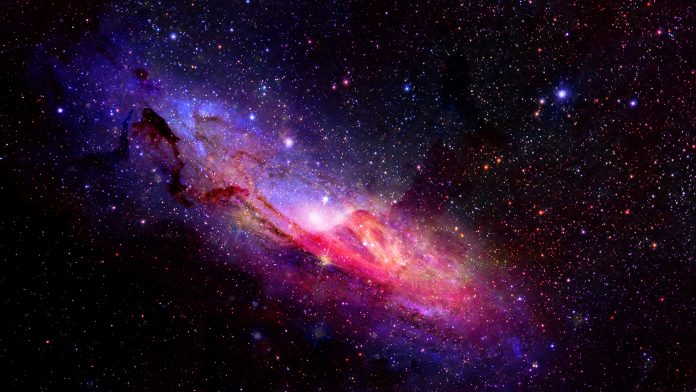Japanese researchers at have developed a groundbreaking method to mitigate the effects of shape noise in astronomy surveys.
Scientists at the National Institutes of Natural Sciences (NINS) have created a novel Artificial Intelligence (AI) method to eliminate shape noise that appears in astronomical data as a result of random alterations in galaxy shapes.
After comprehensive training and testing on a massive sample of mock data generated by supercomputer simulations, the researchers then utilised this innovative instrument on real data from the Subaru Telescope at the National Astronomical Observatory of Japan. They discovered that the mass distribution originated from using this technique is consistent with the most contemporary acknowledged models of the Universe. Therefore, this powerful tool will be instrumental for assessing and evaluating big data from both current and future planned astronomy surveys.
The astronomers’ research has been published in the June 2021 issue of Monthly Notices of the Royal Astronomical Society.
Gravitational lensing
Wide area data from astronomy surveys can be utilised to explore and study the large-scale structure of the Universe through calculations of gravitational lensing patterns.
In gravitational lensing, the gravity of a foreground object, such as a cluster of galaxies, can interfere with the image of a background object, such as a more distant galaxy that is behind it but in the same line of sight. A prominent example of gravitational lensing is the Eye of Horus.
This has an effect much like looking through a colossal magnifying glass. This novel phenomenon enables scientists to observe and study the specifics of early galaxies too far away to be seen with currently available technology and telescopes.
In certain cases, much smaller objects, such as individual stars, can behave as gravitational lenses when they pass in front of more distant stars. Then, for a short period of time, sometimes as little as a few days or weeks, light from the more distant star momentarily seems brighter as it is magnified by the gravity of the closer object.
The large-scale structure, consisting mostly of mysterious dark matter, can distort the shapes of distant galaxies as well, but the expected lensing effect is subtle. Averaging over many galaxies in an area is essential to develop a map of foreground dark matter distributions.
However, this method of studying the images of many galaxies comes with its challenges: it can often be difficult to differentiate between a galaxy image distorted by gravitational lensing and a galaxy that is actually distorted. This is referred to as shape noise and is currently one of the restricting factors when researchers are studying the large-scale structure of the Universe.
Utilising artificial data sets
In order to compensate for shape noise, the team of Japanese scientists first applied ATERUI II, the world’s most powerful supercomputer dedicated to astronomy, to produce 25,000 mock galaxy catalogues built from real data from the Subaru Telescope.
Then, they inserted realist noise to these perfectly known artificial data sets, and taught an AI to statistically recover the lensing dark matter from the mock data.
After this training, the Artificial Intelligence was proficient in recovering previously unobservable fine details, helping to enhance our understanding of the cosmic dark matter. Then, utilising this AI on real data covering 21 square degrees of the sky, the researchers discovered a distribution of foreground mass consistent with the standard cosmological model.
“This research shows the benefits of combining different types of research: observations, simulations, and AI data analysis.” said Masato Shirasaki, the leader of the team, “In this era of big data, we need to step across traditional boundaries between specialities and use all available tools to understand the data. If we can do this, it will open new fields in astronomy and other sciences.”









